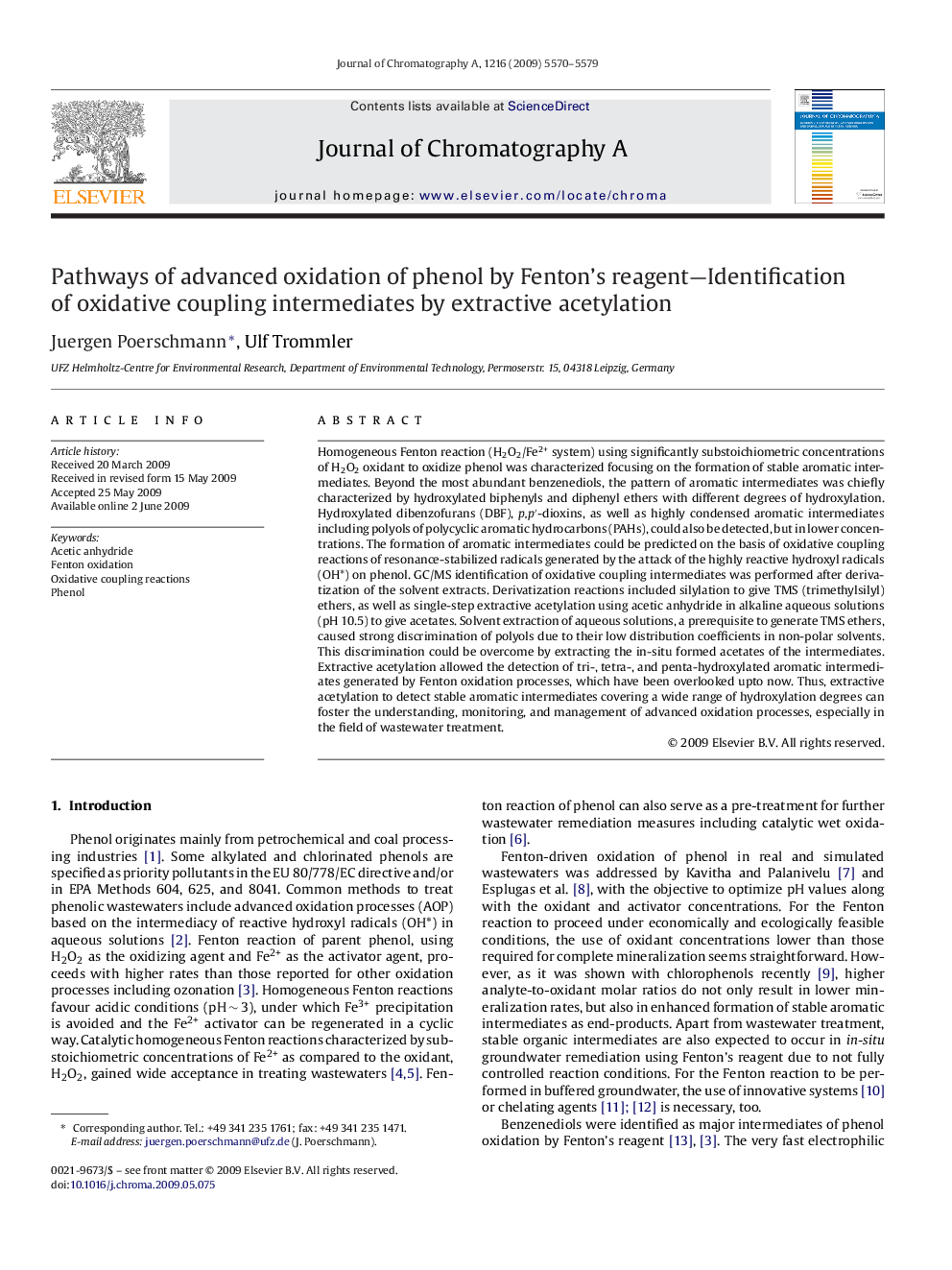| کد مقاله | کد نشریه | سال انتشار | مقاله انگلیسی | نسخه تمام متن |
|---|---|---|---|---|
| 1204352 | 965150 | 2009 | 10 صفحه PDF | دانلود رایگان |

Homogeneous Fenton reaction (H2O2/Fe2+ system) using significantly substoichiometric concentrations of H2O2 oxidant to oxidize phenol was characterized focusing on the formation of stable aromatic intermediates. Beyond the most abundant benzenediols, the pattern of aromatic intermediates was chiefly characterized by hydroxylated biphenyls and diphenyl ethers with different degrees of hydroxylation. Hydroxylated dibenzofurans (DBF), p,p′-dioxins, as well as highly condensed aromatic intermediates including polyols of polycyclic aromatic hydrocarbons (PAHs), could also be detected, but in lower concentrations. The formation of aromatic intermediates could be predicted on the basis of oxidative coupling reactions of resonance-stabilized radicals generated by the attack of the highly reactive hydroxyl radicals (OH*) on phenol. GC/MS identification of oxidative coupling intermediates was performed after derivatization of the solvent extracts. Derivatization reactions included silylation to give TMS (trimethylsilyl) ethers, as well as single-step extractive acetylation using acetic anhydride in alkaline aqueous solutions (pH 10.5) to give acetates. Solvent extraction of aqueous solutions, a prerequisite to generate TMS ethers, caused strong discrimination of polyols due to their low distribution coefficients in non-polar solvents. This discrimination could be overcome by extracting the in-situ formed acetates of the intermediates. Extractive acetylation allowed the detection of tri-, tetra-, and penta-hydroxylated aromatic intermediates generated by Fenton oxidation processes, which have been overlooked upto now. Thus, extractive acetylation to detect stable aromatic intermediates covering a wide range of hydroxylation degrees can foster the understanding, monitoring, and management of advanced oxidation processes, especially in the field of wastewater treatment.
Journal: Journal of Chromatography A - Volume 1216, Issue 29, 17 July 2009, Pages 5570–5579